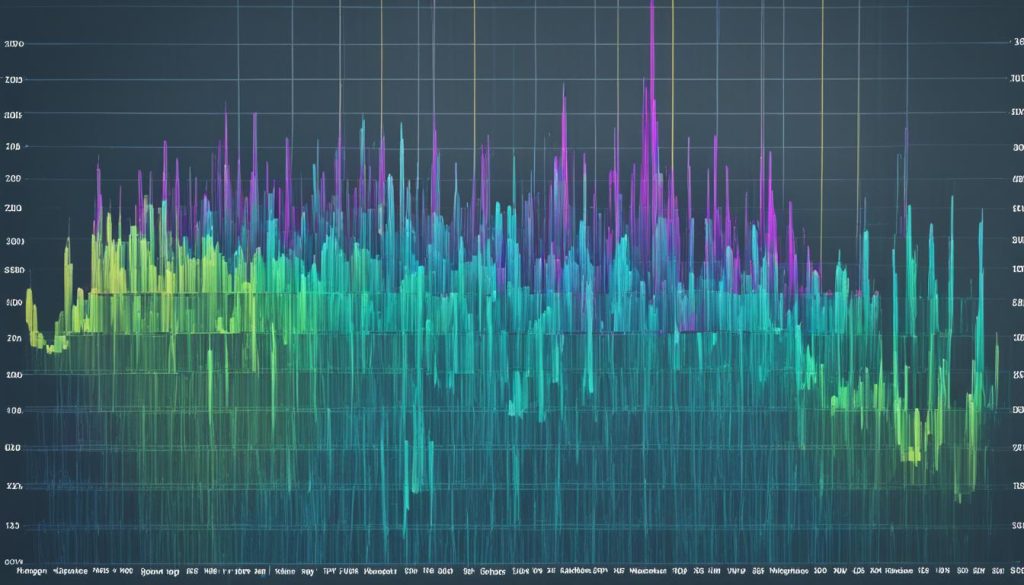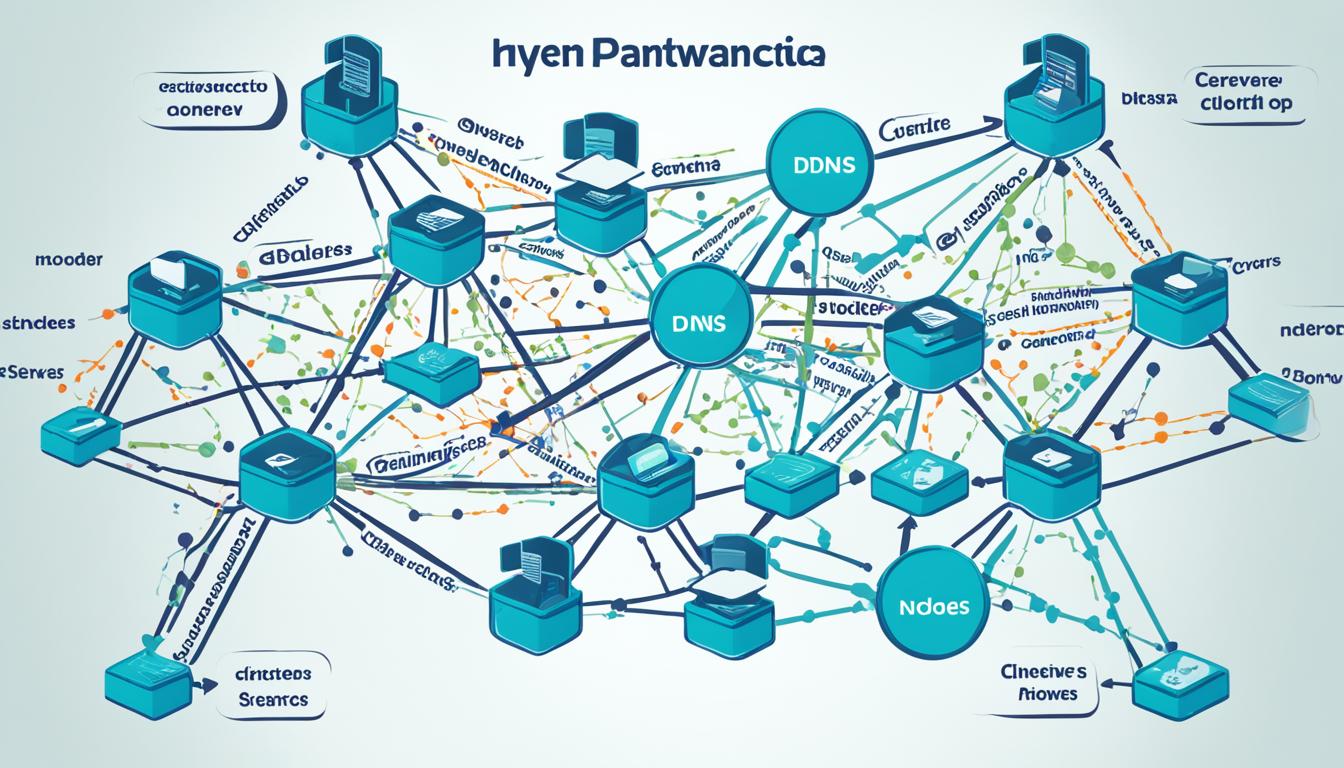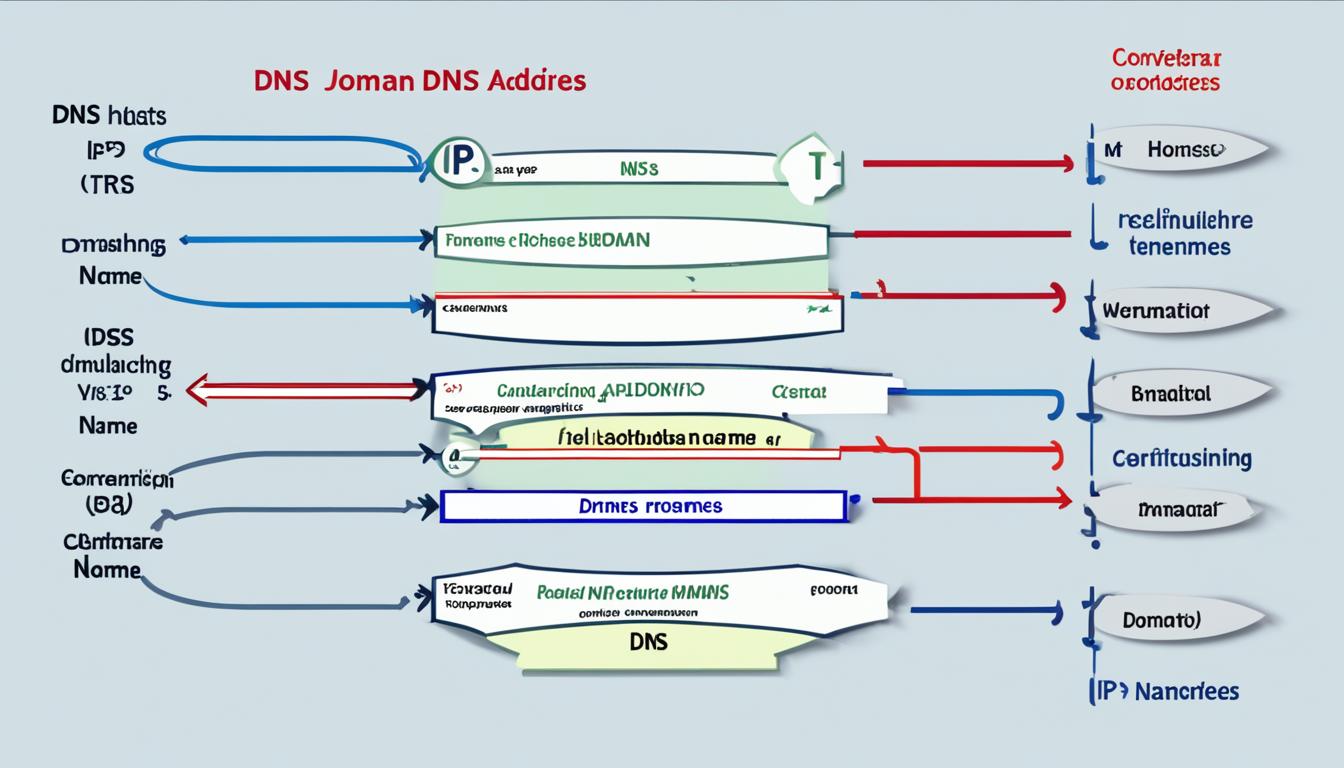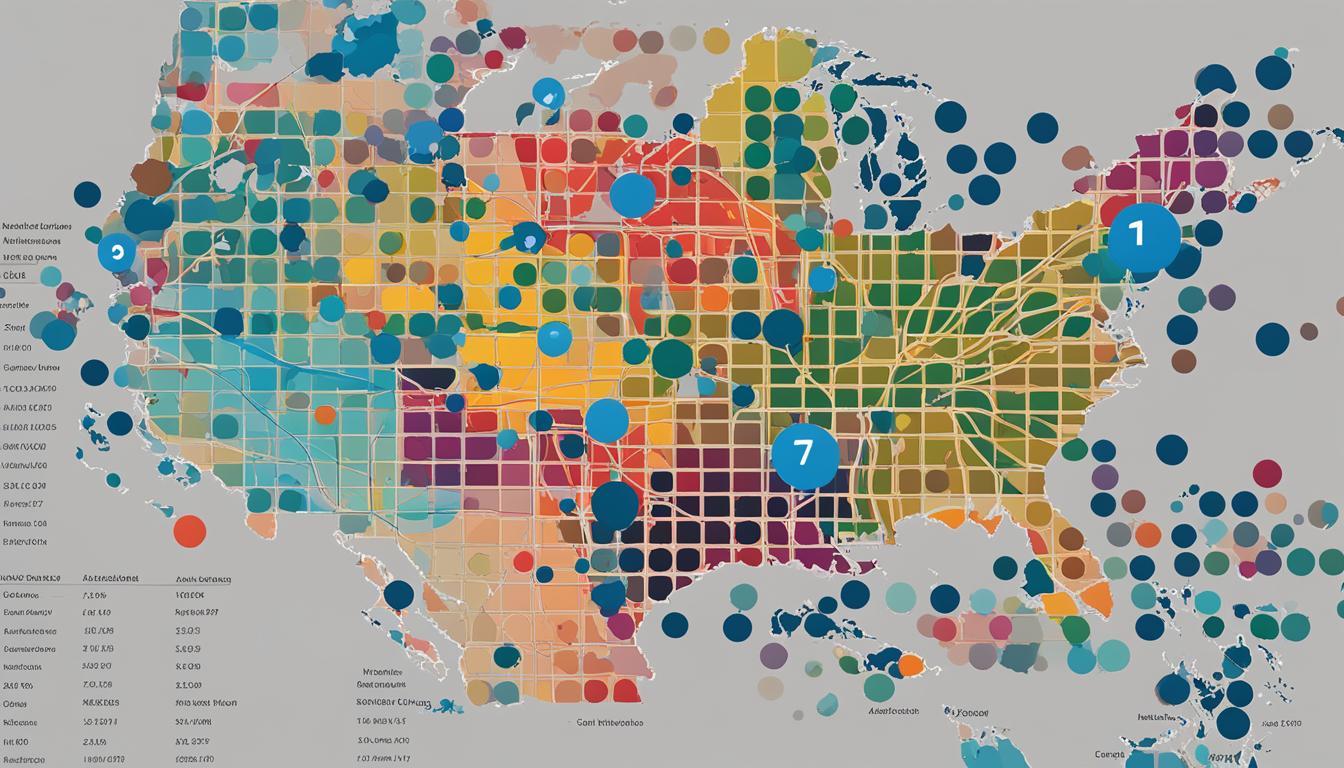DNS History | The World’s Best Historical DNS Server Data
Did you know that the internet relies on the Domain Name System (DNS) to function effectively? Every time you access a website or send an email, your device relies on DNS to translate domain names into IP addresses that computers can understand. With billions of websites and constant changes to DNS records, the historical data surrounding DNS servers is vast and complex.
Accessing and deciphering this historical DNS server data can provide valuable insights into the evolution of websites, network infrastructure, and cybersecurity. It can also help troubleshoot DNS configuration issues and track down domain ownership changes. Fortunately, there are powerful tools and platforms available to help unravel the mysteries hidden within DNS history.
Key Takeaways:
- DNS history data offers valuable insights into website evolution, network infrastructure, and cybersecurity.
- Accessing historical DNS records can help troubleshoot DNS configuration issues and track domain ownership changes.
- There are several powerful tools and platforms available for accessing and analyzing DNS historical data.
- Some popular options include SecurityTrails, Spyse, Complete DNS, WhoISrequest.com, DNS History, Domain Tools, and Whoxy.com.
- These platforms provide comprehensive databases of DNS records, allowing users to retrieve past nameservers, IP addresses, and more.
SecurityTrails (free)
When it comes to accessing DNS history records, SecurityTrails is a top-rated platform that offers a wealth of valuable data. With a database containing approximately 3.4 trillion DNS records, 3 billion WHOIS records, and 418 million hostnames, SecurityTrails is one of the most comprehensive sources for DNS history data available. Since mid-2008, SecurityTrails has diligently collected data daily, ensuring that the information provided is up-to-date and accurate.
While SecurityTrails offers various tiers of paid accounts for more advanced features, the platform also provides a free account option that gives users access to essential DNS history data. With the free account, users can benefit from 50 API queries, 12 years of historical DNS records with daily granularity, and subdomains for any given domain.
SecurityTrails stands out for its user-friendly interface, making it easy for users to navigate and retrieve the desired DNS information. Whether you’re a security professional, a network administrator, or a curious individual seeking DNS insights, SecurityTrails simplifies the process of accessing DNS history records.
To demonstrate the power and scope of SecurityTrails’ capabilities, take a look at the example table below showcasing the different types of DNS records available for a given domain:
| Type | Quantity |
|---|---|
| A | 10,000 |
| AAAA | 5,000 |
| MX | 2,000 |
| CNAME | 7,500 |
| TXT | 3,000 |
As you can see from the table and the accompanying image above, SecurityTrails provides comprehensive data on various DNS record types, including A, AAAA, MX, CNAME, and TXT records. This level of detail allows users to analyze the historical DNS footprint of any domain, uncovering valuable insights about nameservers, IP addresses, and more. Whether you’re investigating a potential security breach, tracking changes made to your own domains, or conducting research, SecurityTrails offers the necessary tools and data to support your efforts.
Spyse (free)
Unfortunately, Spyse, a popular DNS history resource, ceased its operations in March 2022 due to the conflict in Ukraine. Despite its closure, Spyse was an invaluable platform for investigating DNS history. It maintained a vast database comprising over 4.5 billion domains and 50+ million WHOIS records. The platform processed a remarkable 1 PB of data every month, providing comprehensive DNS history records for A, AAAA, MX, CNAME, and TXT records.
Although Spyse is no longer available, its data and features greatly contributed to the understanding and analysis of DNS histories. Its database contained valuable records that shed light on various aspects of DNS management, offering insights into domain configurations, name servers, and more. Spyse’s availability would have enhanced DNS investigations and empowered individuals and organizations with critical data for optimizing their network performance and security.
Despite Spyse’s discontinuation, other alternative platforms, such as SecurityTrails, Complete DNS, WhoISrequest.com, DNS History, Domain Tools, and Whoxy.com, continue to offer valuable resources for exploring DNS history records. These platforms contribute to the broader digital landscape by equipping users with the necessary tools to navigate and understand the intricacies of DNS management.

Complete DNS (free)
If you’re looking for a user-friendly and free tool to track DNS changes, look no further than Complete DNS. This platform provides valuable insights into nameserver modifications and other DNS information. With over 2.2 billion nameserver change records in its database, Complete DNS offers a comprehensive look at DNS modifications.
Complete DNS is designed to make it easy for users to track changes to their nameservers and monitor DNS modifications. Whether you’re a website owner or a network administrator, this tool allows you to stay informed about any changes made to your DNS configuration.
However, it’s important to note that Complete DNS does impose limitations on the number of free lookups within a specific timeframe. To make the most out of this tool, you may consider upgrading to a premium plan that offers additional benefits and more extensive access to DNS change records.

| Benefits of Complete DNS | Limitations of Complete DNS |
|---|---|
| Easy tracking of DNS changes Insights into nameserver modifications User-friendly interface |
Limited number of free lookups May require upgrading to a premium plan for full access to DNS change records |
WhoISrequest.com (free)
If you’re looking for reliable DNS history information regarding nameservers, WhoISrequest.com is the perfect resource. Since 2002, this website has been dedicated to tracking nameserver changes, making it a valuable tool for investigating DNS history. Best of all, you can access and utilize the platform for free, giving you the opportunity to explore the vast database of nameserver records.
WhoISrequest.com offers a user-friendly interface that allows you to easily search for specific nameservers and retrieve historical data. Whether you’re curious about past nameserver changes or need to investigate DNS history for research purposes, this platform has you covered.
However, it’s important to note that WhoISrequest.com does have limits on the number of free lookups available within a certain period of time. So, be sure to make the most out of your free queries to gather the information you need.
In conclusion, if you’re in search of comprehensive DNS history records for nameservers, WhoISrequest.com is the go-to website. With its extensive database and reliable information, you can confidently investigate nameserver changes and explore DNS history without any cost.
DNS History (free)
When it comes to exploring DNS records and domain history, DNS History is an invaluable resource. Since 2009, this platform has been diligently crawling DNS records, building an extensive database that includes over 650 million domains and more than 2 billion DNS records. By utilizing DNS crawling techniques, DNS History provides users with access to a wealth of information about the historical DNS landscape.
While it’s important to note that the accuracy of the data may vary, DNS History still offers a valuable reference point for investigating DNS records and gaining insights into domain history. Whether you’re researching a specific domain or curious about the changes in the DNS landscape over time, DNS History makes it easy to explore historical DNS records.
The Benefits of DNS History:
- Comprehensive Database: DNS History’s database consists of over 650 million domains and more than 2 billion DNS records, providing a wide range of historical data to explore.
- DNS Crawling: Through DNS crawling techniques, DNS History regularly updates its database, ensuring that users have access to the most current and accurate historical DNS records.
- Investigative Tool: Whether you’re conducting research, performing forensic analysis, or monitoring changes in the DNS landscape, DNS History serves as a valuable investigative tool.
To further enhance your understanding of DNS history, take a look at the example table below:
| Domain | Date | Nameservers |
|---|---|---|
| example.com | 2010-05-15 | ns1.exampledns.com |
| example.com | 2012-09-23 | ns2.exampledns.com |
| example.com | 2015-11-07 | ns3.exampledns.com |
As you can see from the table, DNS History allows users to track changes in nameservers over time, providing valuable insights into the evolution of a domain’s DNS infrastructure.
With DNS History’s vast database and DNS crawling capabilities, exploring the historical DNS landscape has never been easier. Whether you’re a researcher, a cybersecurity professional, or simply curious about the history of a particular domain, DNS History is an essential tool for uncovering the secrets hidden within DNS records.
Domain Tools (premium)
While the previously mentioned free sites typically provide enough information for most users, Domain Tools offers a premium service called the “Hosting History” report. This paid feature allows users to access in-depth historical information about IP addresses, name servers, and registrars.
If you require a more comprehensive analysis of your website’s DNS history, the Domain Tools premium service is an excellent option. The Hosting History report provides a detailed record of past IP addresses associated with your domain, allowing you to track changes over time. This is particularly useful for identifying any suspicious or unauthorized activity that may have occurred.
In addition to historical IP addresses, the Hosting History report also includes information about name servers and registrars. By examining the historical data, you can gain insights into any changes made to your domain’s infrastructure and ownership. This can be beneficial for troubleshooting technical issues, managing domain transfers, and ensuring the security and stability of your website.
Domain Tools’ premium service offers a comprehensive and reliable solution for businesses and individuals who require in-depth DNS history analysis. While the free tools mentioned earlier are suitable for basic investigations, the premium service provides a more extensive range of data and advanced features.
| Key Features of Domain Tools (premium) |
|---|
| The Hosting History report provides detailed information about historical IP addresses, name servers, and registrars. |
| Track changes to your domain’s IP addresses over time and identify any suspicious activity. |
| Gain insights into name server changes and domain ownership history. |
| Beneficial for troubleshooting technical issues and managing domain transfers. |
| Ensures the security and stability of your website. |
Whoxy.com (free)
If you’re looking for a reliable and comprehensive source of DNS data, Whoxy.com is here to help. With a database containing over 364 million indexed domains, this free website offers an extensive range of information on domain ownership change history and nameserver records. It’s a valuable resource for investigating DNS history and gaining insights into the evolution of a domain.
Whoxy.com allows you to access old nameserver records, allowing you to see how a domain’s infrastructure has changed over time. This data can be crucial for understanding the history of a website and identifying any potential red flags. Whether you’re a cybersecurity professional, a researcher, or simply curious about the background of a domain, Whoxy.com provides the tools you need to delve into the world of DNS data.
Tracking domain ownership changes is another area where Whoxy.com excels. By analyzing historical records, you can uncover valuable information about the previous owners of a domain, potentially shedding light on its past and helping you make informed decisions.
FAQ
What is DNS history?
What is a DNS archive?
How can I access DNS history records?
Can I access DNS history for free?
What is SecurityTrails?
What did Spyse offer before shutting down?
What is Complete DNS?
What is WhoISrequest.com?
What is DNS History?
What does Domain Tools offer?
What is Whoxy.com?
- How Strategic SEO Drove Growth for a CPAP E-commerce Brand - July 24, 2025
- Top 3 SEO Companies in Toronto: An Analytical Comparison - July 23, 2025
- SEO for Entry Door Services - April 24, 2025





















Post Comment
You must be logged in to post a comment.